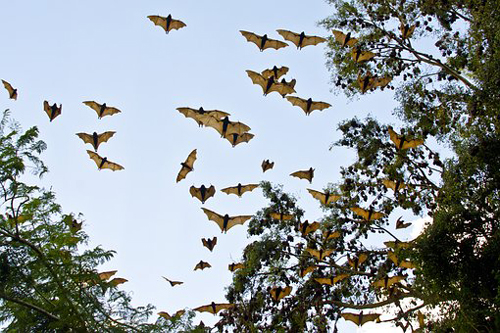Before getting to my column, I have the pleasure of presenting a new voice for Pro to Pro. Marlon Lopez recently achieved an Ophthalmic Science Degree from Raritan Valley Community college, and is a Certified Para-Optometric with the New Jersey Society of Optometrists. He enjoys applying his technical knowledge to educate patients.
Welcome Marlon!
Now, back to the regularly scheduled column …
During a recent vacation in Maine, I was reminded that Mainers view bats – the funny looking, furry, flying kind – rather fondly. Two iron bats adorn the gates outside author Stephen King’s home in Bangor. An entrepreneur in Searsport makes “bat houses” for sale. They are a protected species in Maine, unless they find their way into your attic or eaves. In many visits to that beautiful state, I never found Mainers to be anything but pleasant and practical. So why the apparently odd affinity for creatures most of us view as creepy? Because Maine bat species feed on huge numbers of mosquitoes (the bane of Maine summers) and other pesky flying insects.
 Have you ever had a patient hand you a prescription, usually -1.00 sphere or less, and exclaim that they were “blind as a bat?” Where does that expression come from? According to Dr. Christopher S. Baird of West Texas A&M University, bats actually have good vision that may be better than that of humans in low light conditions such as dawn or dusk. While it’s true that bats use echolocation, emission of high-pitched soundwaves that strike an object and bounce back, to locate prey, the range is only 33 to 66 feet. They rely on vision to identify objects beyond that range. The misguided expression may come from bats “scooping up” insects with their wings and tails which results in an erratic flight pattern that makes it look like they can’t see where they are going. So now you know!
Have you ever had a patient hand you a prescription, usually -1.00 sphere or less, and exclaim that they were “blind as a bat?” Where does that expression come from? According to Dr. Christopher S. Baird of West Texas A&M University, bats actually have good vision that may be better than that of humans in low light conditions such as dawn or dusk. While it’s true that bats use echolocation, emission of high-pitched soundwaves that strike an object and bounce back, to locate prey, the range is only 33 to 66 feet. They rely on vision to identify objects beyond that range. The misguided expression may come from bats “scooping up” insects with their wings and tails which results in an erratic flight pattern that makes it look like they can’t see where they are going. So now you know!On a more serious note, legal blindness is considered to be best correction in the better eye that is worse than or equal to 20/200, or a visual field of less than 20 degrees in diameter, and is used as a basis for eligibility for government services. Low vision is a different category for uncorrectable vision loss. The various conditions require particular expertise to help patients whose best corrected vision, usually between 20/70 and 20/400, impairs their ability to function normally and perform the activities necessary for independent living. (Hardly those patients with a -1.00 correction to 20/20!)
You can learn about low vision and its associated symptoms, the common causes of low vision and the types of low vision devices and their intended uses with our CE An Introduction to Low Vision at www.2020mag.com/ce.













